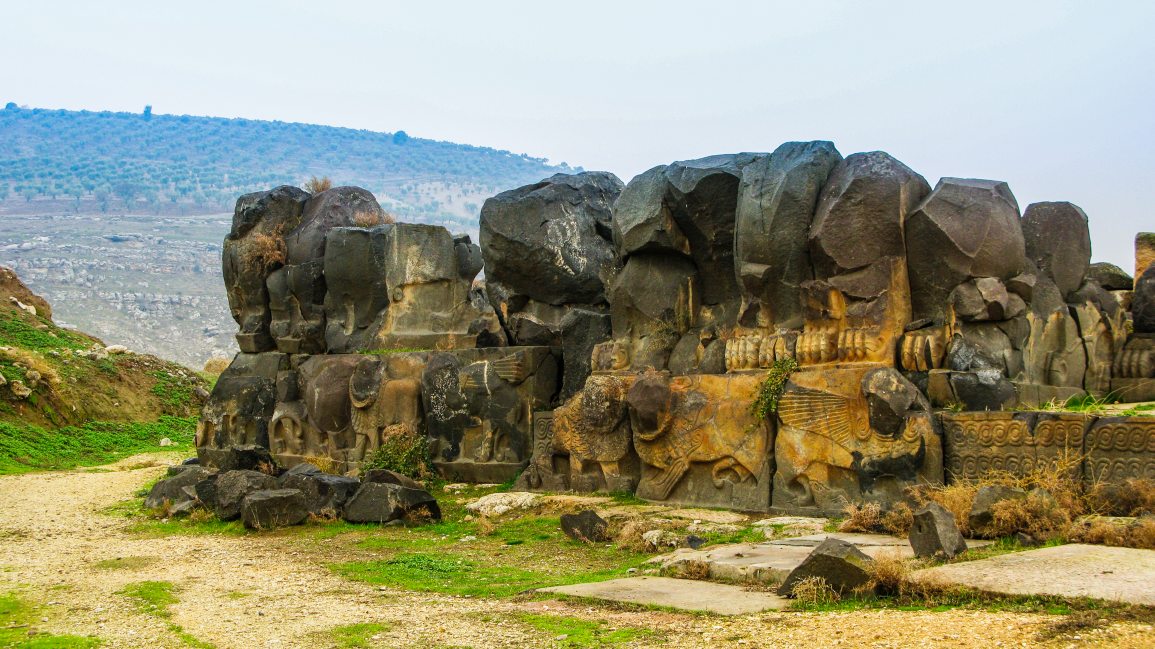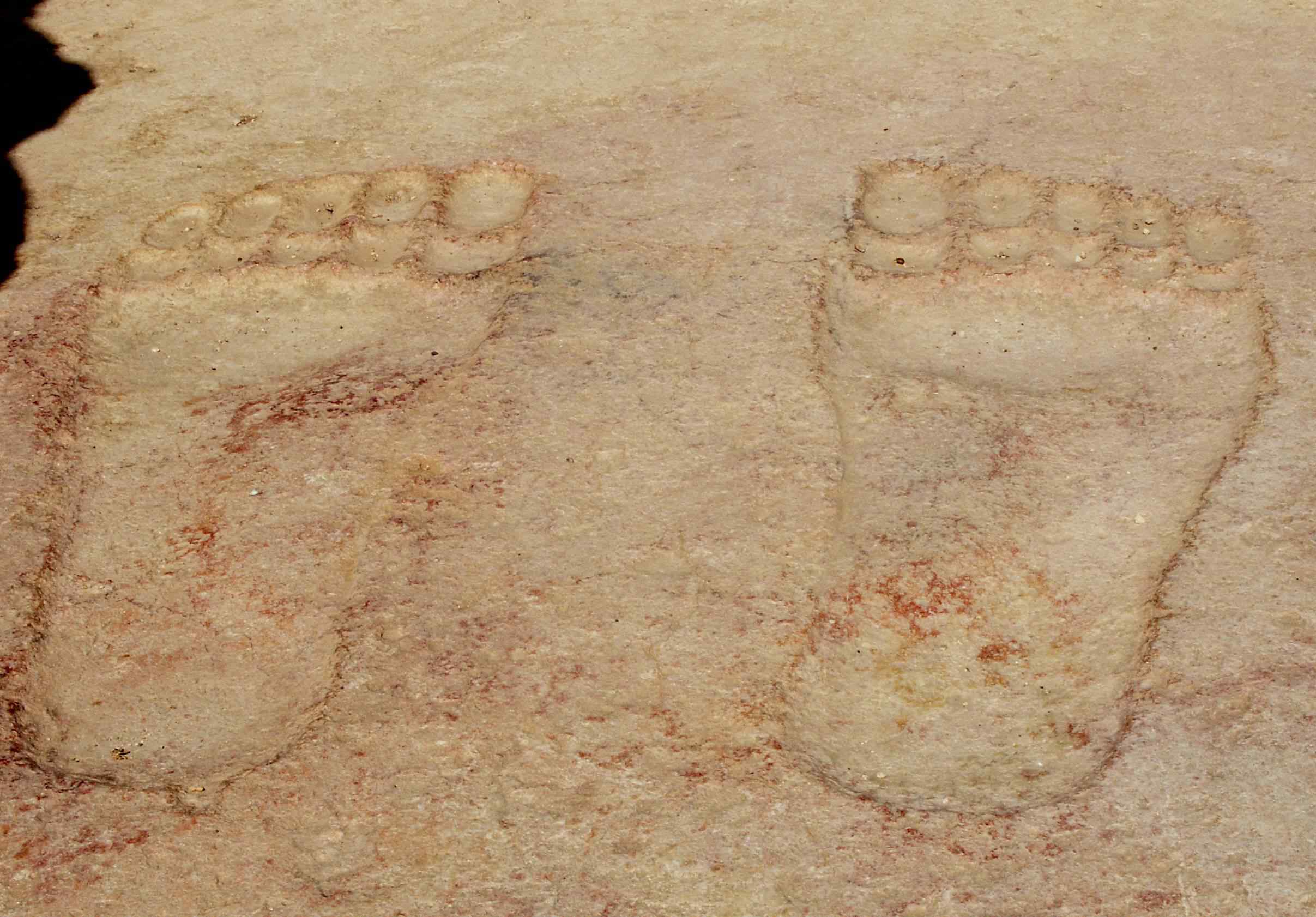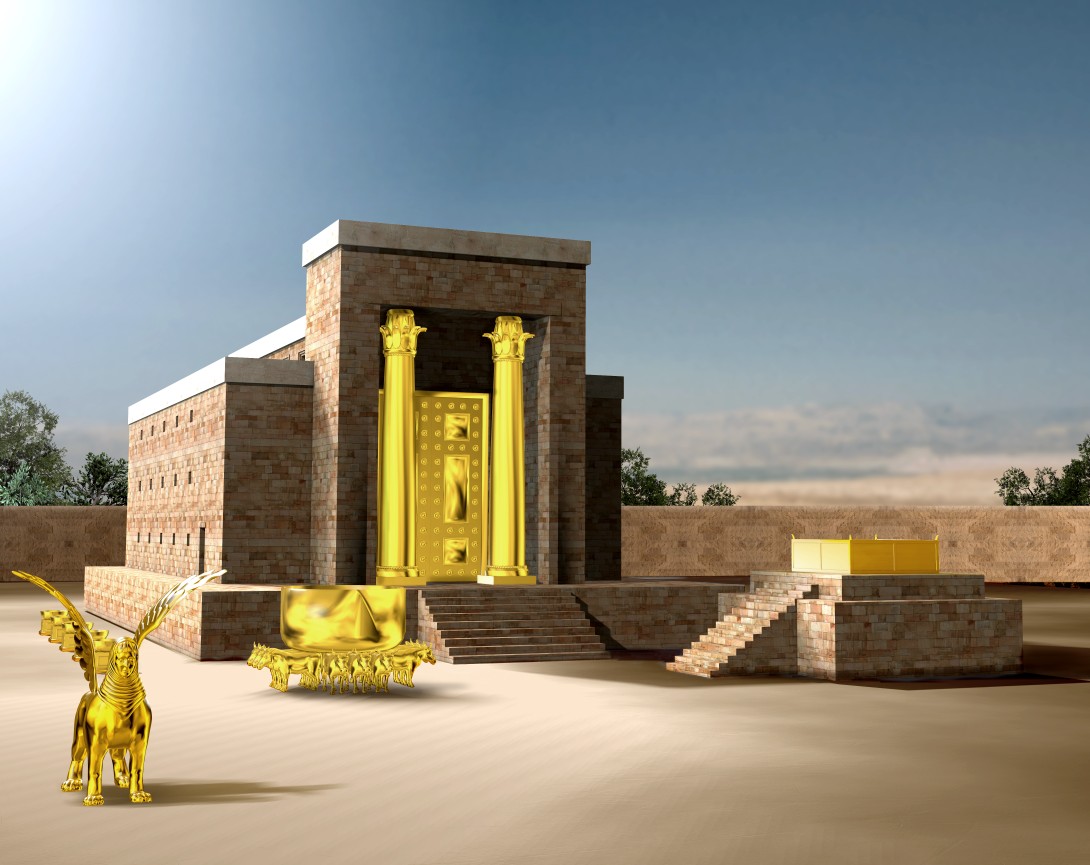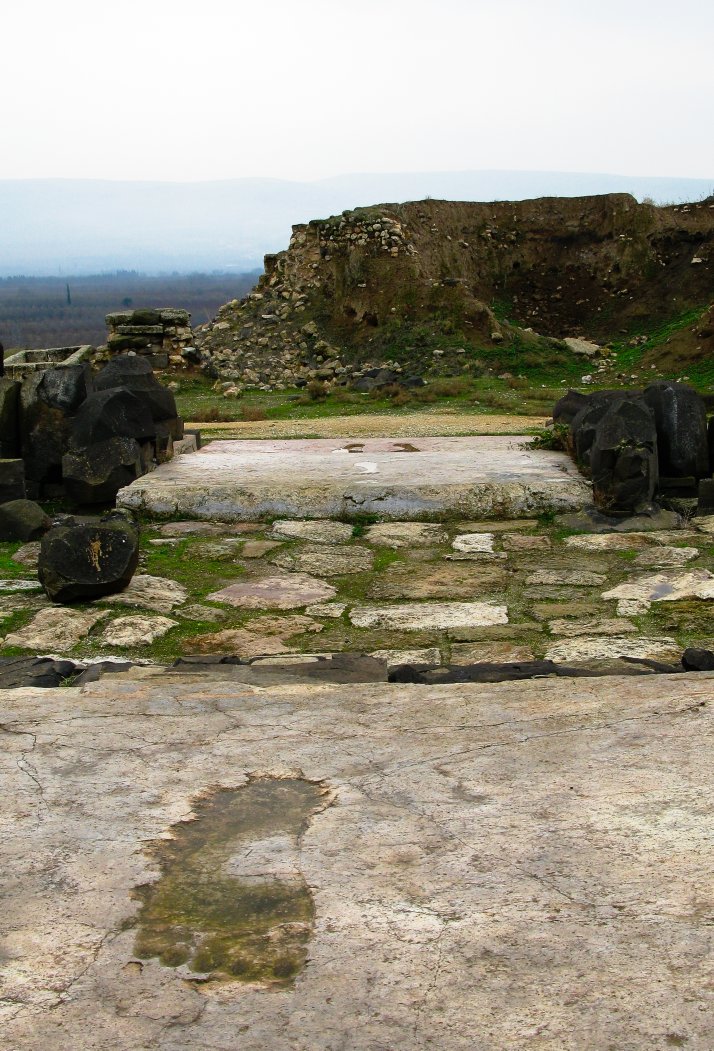There’s a small village of antiquity called “Ain Dara” in the northwest of Aleppo, in Syria, which boasts a remarkable historic structure ― the Ain Dara Temple, located just west of the village.

Outside the entrance of the Ain Dara temple, there is an incredible imprint from history ― a pair of giant footprints. To this day, it remains unknown who made them and why they were carved in such a way.

Ancient myths and stories continually depict our predecessors’ belief that superhuman beings of enormous stature previously walked the Earth. The formerly majestic Ain Dara temple, or at least what is remained of it, originally drew the attention of the media in 1955 when a colossal basalt lion was coincidentally discovered on the site.
The Iron-Age temple was later excavated and studied precisely between 1980 and 1985, and it has been compared to King Solomon’s Temple on a number of occasions.

According to the Bible History Daily, the startling similarities between the ‘Ain Dara temple and the temple depicted in the Bible are quite remarkable. Both structures were constructed on massive artificial platforms that were constructed on the highest points of their respective towns.
The architecture of the buildings follows a similar three-part structure: an entrance porch supported by two columns, the main sanctuary hall (the hall of the ‘Ain Dara temple is divided into an antechamber and the main chamber), and then, behind a partition, an elevated shrine, known as the Holy of Holies.
A series of multistoried halls and chambers that served a variety of purposes surrounded them on three of their sides on either side of the main building.
However, despite the fact that the Ain Dara temple shares many characteristics with King Solomon’s temple, it is improbable that they are the same structure. The Ain Dara temple, according to the excavator Ali Abu Assaf, was built around 1300 BC and lasted for 550 years, from 740 BC to 1300 BC.
Archaeologists are still unable to determine which deity was worshipped at the temple and to whom it was dedicated. Several scholars assume that it was built as a shrine to Ishtar, the goddess of fertility. Others believe it was the goddess Astarte, who was the owner of the sanctuary. Another group believes that the god Baal Hadad was the proprietor of the temple.
Some of the temple’s structural elements, including the limestone foundations and basalt blocks, have been carefully preserved over the centuries. Although the structure once featured mudbrick walls covered with wood paneling, that feature has tragically been lost to history.
Numerous artistically carved reliefs representing lions, cherubim, and other mythical creatures, mountain gods, palmettes, and ornate geometric motifs adorn the exterior and interior walls of the structure.
The Ain Dara temple’s entrance is guarded by a pair of carved huge footprints that stand at the threshold. They are around one meter in length and are oriented toward the temple’s interior.
The ‘Ain Dara temple, like Solomon’s Temple, was accessed by a courtyard that was paved with flagstones. Upon the flagstone, the left footprint had been inscribed, signaling the god’s entrance into the temple. In the cella’s threshold, the right footprint was engraved, signifying that the enormous god just had to take two steps to enter the temple.

The space between the two single footprints is approximately 30 feet. A stride of 30 feet would be appropriate for a person or goddess approximately 65 feet in height. The temple is spacious enough for the god to enter and reside within it comfortably.
Researchers are baffled as to why they were engraved and what function they performed. Some scientists have suggested that footprints can be constructed to evoke the presence of the gods, serving as a form of an iconic image of the deity. Despite the fact that this is not a true pair of giant footprints, the carving is authentic, and it shows that our forefathers were familiar with and seen entities of enormous size.
Everyone knows that Mesopotamia is well-known for being the cradle of civilization and the source of one of the world’s greatest mythological legends, thus strange and perplexing finds like the gigantic footprints are to be expected in the region.
The mythology of the surrounding area certainly suggests a time when giants, demigods, and gods roamed the Earth leaving their mark behind. Some of these narratives tell of Anunnaki who, according to the legend, came on earth from other planet thousands of years ago and changed our civilization forever.




